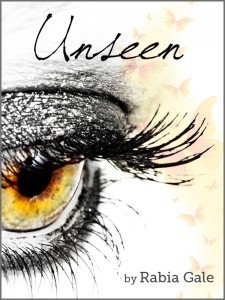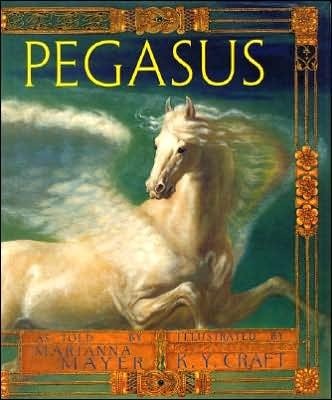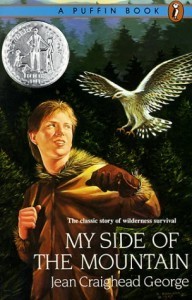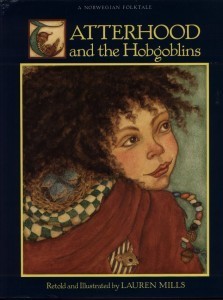Rabia Gale's Blog, page 21
August 8, 2012
how the internet is changing my brain
I need to change my Internet habits.
I spend a lot of time online for both work and pleasure, and the line between the two often blurs. It’s easy for that to happen on the Internet. You get on to check reviews and samples for homeschooling curricula and, before you know it, you’re watching a video of dueling cellos while ogling pictures of steampunk-themed sand castles and it’s 1 am and five hours have gone by.
So this podcast by Michael Hyatt (via Jodi Lea Stewart) came at the right time for me. Navigating the Internet is like a balancing act and I fell off a long time ago
I’m not a scientist and I can’t discuss the latest research on how the Internet is changing our brains. But I do know that it’s had a negative impact on my brain in the following ways:
First, it’s turning me into a consumer rather than a creator. Guys, there is such a LOT of cool stuff on the Internet. Thoughtful and witty and entertaining blog posts. Gorgeous photos and awesome art. Funny memes, useful how-tos, amazing facts. I could spend hours immersing myself in other people’s words and images.
And quite frequently, I do.
But the thing is, if I’m consuming then I’m not giving myself the time or space or silence to create. And if I don’t create, if I don’t bring art from within me, I feel down and depressed.
Which leads me to another aspect of the Internet: it’s shortening my attention span. Ever notice how you surf the web? You read a short blog post, follow a link to a two-minute video, move on to a series of pictures with funny captions, then tweet or change your FB status. You’re restless, constantly on the move, clicking links, opening and closing tabs.
If it doesn’t grab right away, if it’s not broken up with lots of white space and cute images, if it’s too difficult to get into, you move on.
And that’s filtering into other areas offline. Follow an argument through several pages of densely-written text? Phbbt. Reached a snag in my current story? I’ll just check my RSS feed for a few minutes. I wrote a paragraph? Hooray. Now I can go see if someone mentioned me on Twitter.
Uh. No. In order to write the kinds of stories I want to, I need to dig deep into myself. I need to burrow into my characters’ heads, wear their skins, feel the bite of the wind and the stench of sewage and the ache of muscle… and I can’t do that if I’m running off every ten minutes.
The Internet keeps me sedentary. I am my brain and my body (and my soul, but I’m not getting into that discussion right now). They feed each other. Ever notice how many ideas come to you when you’re doing a repetitive action, like washing dishes or sweeping the floor or–this is a big one for me–pacing a room? My muscles work, kickstart my brain, and boom! I unsnarl a plot point, a coy character starts talking, and I get a new story idea.
The Internet can cause unhealthy dependence on casual relationships. Online interactions are like a drug. Every comment on a blog post and every retweet can give a momentary high, leaving one craving more. My life, though, is not measured in blog subscribers, twitter followers or the opinions of perfect strangers. When those things take away from the real, important work of raising my children and investing in my close (on and offline) relationships, they’re taking a place that’s not meant for them.
And lastly, too much screen time makes me feel bad. If I spend too much time staring at the screen (and this includes TV and video games) I come away feeling jittery, anxious, sad, or down. And then it’s hard for me to reconnect with the world around me, with my family, with my own stories, with God.
And with that, it’s time for me to get off the computer and take my children outside to see what butterflies and dragonflies we can spot!
How is the Internet affecting your brain? What guidelines govern your Internet usage?

August 6, 2012
THAT book: the faber book of modern fairy tales
The particular edition of The Hobbit that your father read to you when you were a kid. That picture book retelling of Rapunzel with the illustrations you could sink into. The anthology whose pages you pored over for hours.
That book.
The book that is so much more than the words. It’s the story and the cover and the illustrations. It’s the heft and the shape, the feel of the paper, the smell of the pages. It’s the book that’s inextricably wrapped up in your memories–the sound of your father’s voice, the slant of the afternoon sun on the back of your neck, the day you first brought it home from the store or opened its pages.
For me, one of those books is The Faber Book of Modern Fairy Tales, edited by Sara and Stephen Corrin. My copy of it–obtained when I was about ten–is at my parents’ house in Karachi and very much out of my reach. So when I saw a used copy of it–with the same cover!–on sale on Amazon marketplace for a mere $5 and change, I jumped at the opportunity to reclaim a bit of my childhood.
These are no retellings of conventional fairy tales, nor are they riffs and twists of them. They are fairy tales, featuring questing young men and faithful woodcutter’s daughters, charmed lives and magical rings, visions and transformations. A squirrel turns into a woman, a young man claps thunder from his hands, a good little girl’s utterances are accompanied by a fall of jewels from her lips. Youths and maidens traverse a landscape of deep forests and vast oceans and on to the edges of the world. These fairy tales are modern in the sense they were written within the past hundred or so years ago, and thus suit today’s sensibilities better. Some are wry or comedic, others poignant and moving, all are enchanting.
It’s hard to pick favorites, but here are a few of the delightful tales hidden between the covers of this anthology:
“The Prince and the Goose Girl” by Elinor Mordaunt: A fearsome, tyrannical prince meets his match in an independent, fearless goose girl–and learns to love along the way.
“A Wind from Nowhere” by Nicholas Stuart Gray: When Tamsin meets a magical talking broomstick, she is thrust into a twilight world of witches and familiars and dark revels. This story made my heart ache.
“A Harp of Fishbones” by Joan Aiken: Nerryn has always been different from the other people in her village. After getting help from an unexpected source, Nerryn makes a harp of fishbones and sets off over the mountains.
“The Great Quillow” by James Thurber: When a giant comes to his town, it’s up to Quillow the toymaker to get rid of him.
… and many more.
Which book is that book for you? What have you done to reclaim a bit of your childhood?

August 4, 2012
share your knowledge! call for guest posts
Done a lot of research about Victorian London? Is grading gemstones your day job? Have you worked with horses all your life and are tired of the way they’re portrayed in fiction? Come share your knowledge with the rest of us.
Starting from mid-August, I’m running a series called “Back to School For Writers” on the blog. And I need your help.
So, if you’re a firefighter, an Aztec expert, or a World War I buff, come tell us about it. What do books and movies almost always get wrong about your subject? Shed some light on an obscure field. Address the myths, pull back the curtains, and show us what a day in the life of an octopus wrangler is really like.
I have 2-4 spots left to fill, starting from mid-September. If you’re interested in doing a guest post, leave a comment below or email me at rabia [at] rabiagale [dot] com. Let’s talk!

August 2, 2012
99-cent price for Unseen goes away tomorrow
Quick note: Tomorrow, I’m changing my intro 99-cent price for my recent release, Unseen. You can get it now at Amazon and Barnes & Noble, or at Smashwords using the half-off coupon code EP45Q (good until 8/8).
A Pakistani girl with a gift for seeing what no one else can incurs the wrath of a supernatural being. A pudgy accountant who sees far more than he wants to is chased by mysterious figures through the gloom of an industrial city. Both encounter what lies beyond the edges of the mundane world.
Unseen is a collection of two previously published short stories by Rabia Gale.
Now available on Amazon US | Amazon UK | Barnes & Noble | Smashwords
Smashwords 50% off coupon code: EP45Q (exp. 8/8/12)

August 1, 2012
my one-night stand with pinterest
It all started innocently enough.
I was in communication with an artist about designing a cover for Rainbird (more on that later!) and she wanted to know what my favorite book covers were.
Well, as you can tell from my book cover/artist Mondays, I was delighted to share this information. I remembered that a friend of mine had sent me a Pinterest invite (oh, so long ago). It was a minute’s work to sign up, create a board with the original title of Book Covers I Like, and start pinning!
I was hooked. Pinterest warmed my pretty-picture-loving little heart. I loved creating boards. I loved choosing images. I loved curating my collections. And it was so easy! None of this mind-numbing downloading and uploading and resizing business. Just pop in the web address, pick an image, write a catchy comment, and hit the button.
In an orgy of pinning, I added boards about fairy tales and steampunk and beautiful natural landscapes.
A day later–after that initial warm glow had faded–reality crept in and put her cold, dead fingers on my neck.
Don’t you think, said she, that you’re spending too much time on this?
It’s only the novelty of it, I told her. I’ll be fine in a day or two. It’s not like my children aren’t being fed and clothed–eventually.
Don’t you think, she pursued, that maybe you should be more careful about what you pin and repin?
It’s not like I’m downloading images onto my hard drive, I answered, defensively, starting to get rattled.
Would you, she went on, feel comfortable putting these images on you blog? Are you absolutely positively sure that you’re not violating anyone’s copyright by pinning them?
….
She had me.
Because I wouldn’t have put all those images on my blog. Some of them certainly, like the book covers. But interior illustrations? Photographs taken by who-knows-who? Artwork by people who didn’t have a prominent Pin It button displayed next to it?
I deleted all my boards save the book covers one. I had let my weakness for lovely art and pretty pictures run away with my good sense. If I couldn’t post an image on my blog in good conscience, I shouldn’t be pinning it.
This was about the time that author Roni Loren posted her nightmarish story, Bloggers Beware–You Can Get Sued For Using Pics On Your Blog, which only deepened my conviction that deleting my boards was the right thing to do. It also sent me scurrying back to check the few images on my blog that aren’t book covers or pictures I took to make sure they’re legit for me to use.
I probably will go back to Pinterest one day, a wiser, more circumspect, and more respectful pinner. But not soon, and not without a lot of care.
Do you pin or post lots of pictures on your blog? Where do you find images are okay for you to use? If you’re on Pinterest, how do you protect yourself?

July 30, 2012
cover artist: Kinuko Y. Craft
This post is for Liana Mir, who likes Book Cover Mondays.
I have long admired the exquisite cover art of Patricia McKillip’s books:
The artist behind these enchanting paintings is Kinuko Y. Craft, who also did the cover art for my current read: Wildwood Dancing by Juliet Marillier (recommended by LisaM).
Craft has also illustrated many picture book retellings of myths and fairy tales:
I could spend hours immersed in the colors and intricate details of her work. It is truly a feast for the eyes. Check out Kinuko Y. Craft’s website for more of her gorgeous paintings.
My other book cover posts:
cover artist: Larry Rostant
cover artist: Chris McGrath
cover artist: Dominic Harman
book cover monday

July 27, 2012
readers, what can I do for you?
Readers,
I know who you are. Or at least I think I do.
You are dear family and real-life friends who support me by subscribing to my blog and buying my books–thank you!
Or, you are other writers I’ve met online, through the Online Writing Workshop (we go way back, you and I!), or Holly Lisle’s How to Think Sideways and How to Revise Your Novel courses, or Kristen Lamb’s We Are Not Alone class. You support and encourage me.
Perhaps you read my fiction, came to check out my Internet home, and stayed.
Maybe you don’t fit in any of these categories at all. Maybe you followed the trail here from a tweet, a comment on another blog, or a search (perhaps you were looking for information about Toph, or tutorials on making Japanese paper dolls and zebra templates, or pictures of small purple flowers–all popular keywords!).
But for some reason, however you came here, you decided to keep checking back. Thank you.
Over the years, my blog has changed a lot. I used to post about my writing process, but now I rarely do. Occasionally, I post a snippet from my work, and once in a very great while, an entire story. I post about my genre–the books I like, the trends I see, the covers I adore, the movies I enjoy, the 80s cartoons I loved. Sometimes I put up something funny, or beautiful, or inspiring. Sometimes I talk about one of my other great passions–learning alongside my children.
Yes, I’m all over the place.
I’ve never asked my readers for their input on my content before. I’m rectifying that now. Which posts have you particularly enjoyed? What do you want to see more of? Do you have any questions for me?

July 25, 2012
reading and kids: the big leap and the big book
I know that I’ve said before that kids learning to read is akin to magic. I’m going to pull that analogy back out because watching reading happen is a wondrous, delightful thing to behold. I love that Big Leap, when a child goes from having to read with you to reading by themselves.
My six-year-old daughter had been trembling on that border line for a while, but a few weeks ago she finally made the big leap. We’d been tag-team reading The Unicorn’s Secret series by Kathleen Duey. She’d read the first and last pages of each chapter, and I would read the material in between. Most of the way through book 4, however, she said, “Mom, I want to finish this up by myself.”
I confess to feeling a little doubtful, but I said “Sure”, figuring that if she found it too challenging we could go back to tag-teaming it. So Miss M. took the book, read her way through to the end, then worked her way through books 5-8, interspersed with many “Mom, guess what happened!” exclamations. After that, there was no looking back. Miss M.’s world has opened up to include The Magic Treehouse, The Secrets of Droon, and all the picture books her younger brother is happy to let her read to him.
My little girl is reading. Reading! She made the Big Leap.
A related phenomenon to the Big Leap is what I call the Big Book. A child looks at a book way beyond his reading ability, one that even doting parents and encouraging teachers secretly believe he’ll never get through, and says, with a determined gleam in his eye, “This is the one. This is the book I’m going to read.” This can happen at any age, and you can’t predict when, or what that Big Book might be.
When Sir I. was five, and had been reading chapter books in the Magic Treehouse and the Flat Stanley series for a few months, we took a family vacation to Maine. Sir I. insisted on bringing Jean Craighead George’s My Side of the Mountain along, much to my (private) skepticism. And he read it. It was beyond what I thought he could read, but he read it and understood it and enjoyed it.
It was his Big Book.
My husband’s Big Book was The Neverending Story which he read because his parents and older sister had. He was about seven-ish at the time. Mine, at the age of four-ish, was Enid Blyton’s The Secret Island (I have a hard time remembering my Big Book or my Big Leap because I was an early reader–I can’t even remember a time when I didn’t know how to read).
Do you remember your Big Leap? What was your Big Book? How about for your kids?

July 23, 2012
5 favorite lesser known fairy tales
Cinderella. Sleeping Beauty. Snow White. Beauty and the Beast. These popular fairy tales (along with a few more I haven’t mentioned) have been illustrated, retold, fractured, and adapted countless times, and they are still going strong. They’re only a small handful of the great number of fairy tales available to us, though. Today I want to highlight five of my favorite lesser-known fairy tales.
The Twelve Dancing Princesses

via SurLaLune Fairy Tales
This is the most popular of the lesser-known fairy tales on this list. It’s enjoying a resurgence in YA fantasy fiction, with such offerings as Princess of the Midnight Ball by Jessica Day George and Entwined by Heather Dixon.
I loved the imagery of this tale–the tattered shoes, the princesses in their ball finery, the magic staircase and the invisibility cloak, the groves of silver, gold, and diamond leaves, the well-lit castle in the center of the lake. That, and I’m a sucker for the kind man of humble origins solving the mystery and winning the princess.
Tatterhood and the Hobgoblins
I didn’t discover this until a few years ago when I got the Lauren Mills’ picture book retelling out of the library for my children. I instantly adored the wild-haired feisty Tatterhood with her red cloak and her white goat and her big wooden spoon for whacking hobgoblins with. I loved her fierce bond of loyalty to her sister, her courage, her adventurous spirit. And when she does finally settle down to become more of a conventional fairy tale princess, it’s with a twinkle in her eye and on her own terms.
King Thrushbeard
I hesitate to add this one, though I loved it as a child. A haughty princess taunts and rejects all her noble suitors. After dismissing the last one, mockingly calling him “Thrushbeard”, her father loses patience with her and declares he will marry her to the next man to come to his gates. The weeping princess thus finds herself wed to a beggar, who insists she earn her keep. Long story short, the beggar is really King Thrushbeard and the princesses, humbled and kinder, takes her place as his queen at the end.
I like fish-out-of-water stories, and lesson-learned tales, but I don’t like the Taming of the Shrew method of a husband schooling his wayward wife. I include this tale–but with reservations. That, and because I think it would be fun to break some time!
Snow White and Rose Red
I enjoyed the rural setting and loved the non-romantic relationships in this one–the love between mother and daughters, the sisterly bond between Snow White and Rose Red, and the friendship between the bear and the girls. I also found it highly amusing that the girls’ every encounter with the ill-natured dwarf led to the latter losing a piece of his beard as a result of their help!
Liang and the Magic Paintbrush
This is the version I read to my children, though I grew up with a different one, whose illustrations I still remember vividly. Liang, a poor Chinese boy, is gifted with a magic paintbrush that makes pictures come to life. When the greedy emperor discovers this, he hunts Liang down and Liang uses his wits to put an end to the man and escape with his paintbrush.
What are your favorite lesser-known fairy tales?
[image error]


July 20, 2012
fiction online
I am slowly–in spite of myself–being drawn into online fiction: serials, flash, created myths and legends.
Like:
City of Glass by Liana Mir
A serialized story about space, glass, and nanotech–and four women in a city of shattering glass.
*
Wing-Feather Fables, a collaboration between photographer Brenda Gottsabend and writer Lisa Ahn.
Brenda provides the visual inspiration, and Lisa the fable to go with it, in 500 words or less.
*
Writer Unboxed’s 7 Sizzling Sundays of Summer Flash Fiction Contest
*
Do you read fiction online? What are your favorites?
[image error]


















